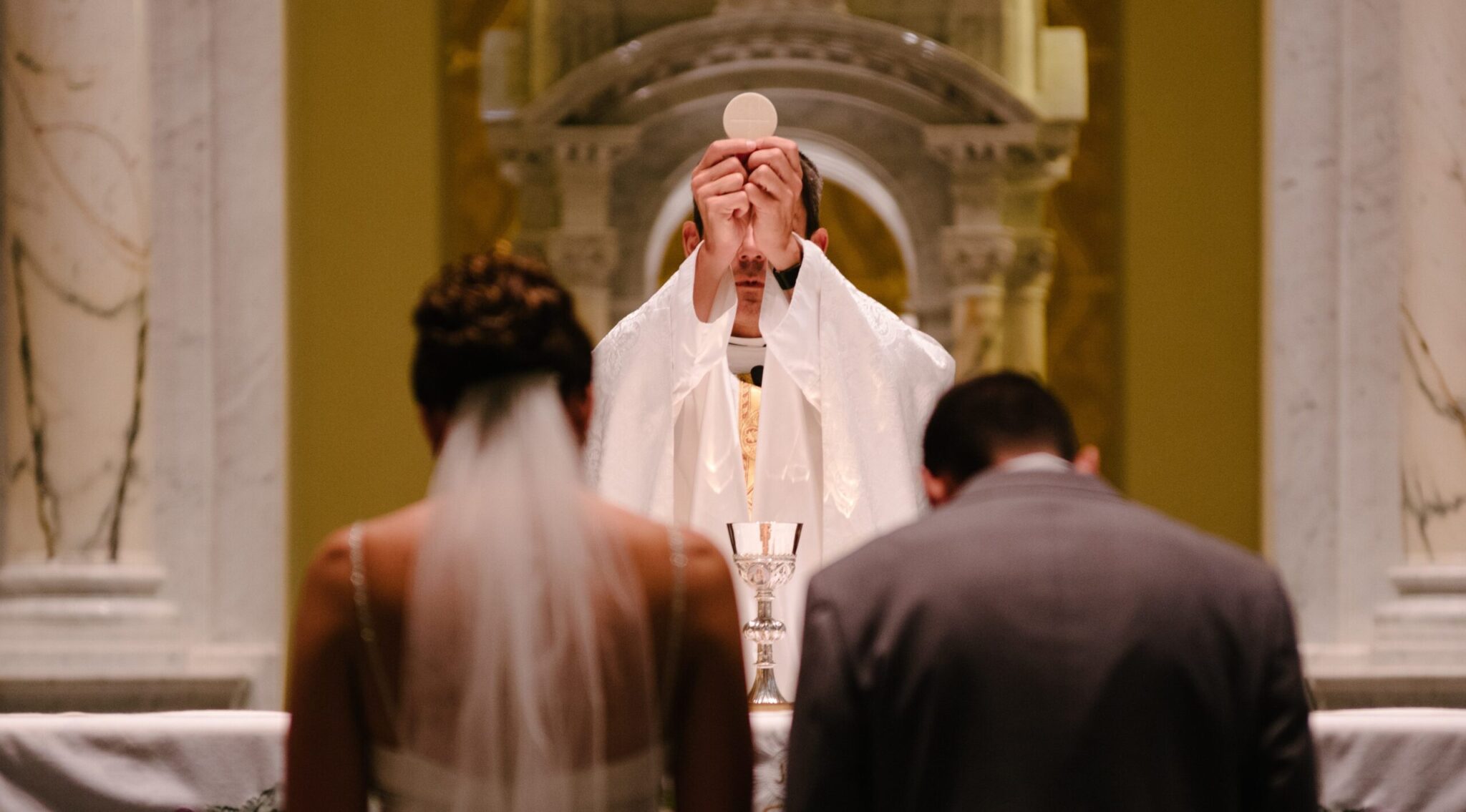Jesus wept (John 11:35). Perhaps one of the most memorable verses in the bible next to John 3:16. Not because of content, but word count (and certainly not because of context). When teachers ask students to learn a memory verse, they humorously remove this one as an option. But in another context, typically at funerals, it is preached to those who have lost a loved one. And when you hear the preacher, the reason why Jesus wept is almost as if his sorrow was for reasons exactly like ours. That is, as if Jesus was so overwhelmed with sorrow concerning the death of Lazarus, that he could not help but weep. And because he loved Lazarus so much, why wouldn’t he? But this isn’t the biblical perspective of why Jesus wept.
Even though the book of Hebrews does present Jesus as our High Priest who was indeed made like us, and can sympathize with our weaknesses (Heb. 4:15), in the book of John, his weeping was not simply sorrow over Lazarus like many would think. As a matter of fact, it was for reasons much deeper and more complex than just sorrow alone. This doesn’t mean sorrow isn’t complex. Nor is it only for those who are immature or weak. Even the strong weep. And sorrow is certainly better for the soul than flippancy and frivolity with respect to our end (Ecc. 7:1-4). But if it wasn’t for Lazarus, then why did Jesus weep?
First, let’s be clear. If Lazarus hadn’t died, then Jesus would have had no reason to weep. So in this sense, we could say Jesus wept because of Lazarus. But unfortunately, that is not what I mean when I say “It wasn’t for Lazarus.” Second, when we understand the nuances of the Greek verb embrimaomai used in verses 33 and 38 that describe how Jesus was “deeply moved/troubled,” and we observe “Jesus wept” sandwiched between, the finer emotional colors begin to fill in the empty canvas. And finally, when we pay attention to how John tells the story, we begin to see the bigger and greater redemptive picture jump from the page! So then, let’s see how the text develops this portrait before our eyes.
Troubled Tears
Embrimaomai can range from indignation and anger to sternness (Lam. 2:6; Mark 1:43; Matt 9:10). Lexically, the word depicts an internal turmoil or passion of some kind. A kind of grief fits this category too (Dan. 11:30). That is why the KJV and NKJV translate this word to be a “groaning” of sorts. Also, accompanying this verb is tarassō, which means to be agitated, troubled, or stirred up internally. John also uses this word in other areas where Jesus has every reason to be internally vexed (John 12:27; 13:21). So when John 11:33 says that Jesus was embrimaomai “in spirit” as well as “troubled,” we’re not gazing in the eyes of a man whose tears are expressing mere sorrow for the death of Lazarus. Jesus is deeply disturbed, agitated, and as some commentators point out, even angry! But why?
Another thing that we must observe is that Jesus’ “weeping” is not like those he is observing all around him in verse 33. A different Greek word is used to describe his weeping – dakryō. This word simply means, to cry or tear. But Mary and those with her, their weeping was of another sort. They are described by the word klaiō, which means to wail and loudly lament. Now just because these are two different words, doesn’t mean that they can’t share a common nuance. Nor does it mean that they are mutually exclusive of one another. But what we must grasp here is that while loud wailing and lamenting can accompany tears, it is not always true in the reverse. You can cry, even to the point of breathlessness, without making much of a sound. And though we don’t know the depth of Jesus’ weeping here, we know that it wasn’t loud, and it wasn’t basic sadness. Jesus was very bothered. But by what?
Tears for Unbelief
In order to further aid us in understanding why Jesus would be so stirred up, even to the point of anger and tears, we have to now take a panoramic view of the context so that we can have a better view of the scriptural landscape.
In John 11:3, where this passage begins, Mary and Martha send a message to Jesus that the one “whom you love is ill.” Notice Jesus’ response:
But when Jesus heard it he said, “This illness does not lead to death. It is for the glory of God, so that the Son of God may be glorified through it.” (John 11:4, ESV; emphasis mine)
Funny, didn’t Lazarus die? Let’s observe, then, that Jesus is using death in a more permanent and spiritual sense. He makes it clear later on that he is the Resurrection and the Life, and that those that believe in him will never eternally die, though they may experience the first death (John 11:25-26). But how many times did Jesus need to reiterate this before they (we) get it?
In verse 4 Jesus says this it was for the glory of God that Lazarus is to experience this sickness, and that it is not unto death. And though he dies, Jesus expands upon his meaning when he tells his disciples that Lazarus is now asleep, and that he will go to awaken him (v 11-14). They didn’t get it. So he tells them plainly that he died, and that they should be thankful that he wasn’t there so that they might believe (implying his intent to resurrect him). But even here, all Thomas could think of was going with him to die!
As Jesus is about two miles away, Martha runs to meet him and says that if he would have been there, Lazarus would not have died (v21-22). Thankfully, she at least acknowledges Jesus’ power to some degree. But when Jesus said to her “Your brother will rise again,” she immediately thinks that he is speaking of the resurrection in the last day. This is not an unbiblical thought, but it’s not what Jesus meant either. And when Jesus reaffirms who he is, Martha in a round about way says she believes him, but she certainly doesn’t tell Mary that. Nor does she mention to her that Jesus has any intention of raising him from the dead. The only thing she says is that Jesus is here and he wants to see you (v28).
Now we enter into the moment of truth. Mary runs out to see Jesus and says verbatim what Martha said a few moments earlier. But this time, on top of hearing the exact same complaint, there is a group following right behind, weeping and wailing. So as Jesus observes all this, by this time, there is no doubt in my mind that one of the contributing factors to his grief and agitation was the unbelief of those around him. And seeing that there are other texts that reveal Jesus being emotionally “stirred up” due to unbelief (Mar. 3:1-6; 9:19; 16:14; Luke 24:25), it falls within the Christological spectrum for him to shed passionate tears because of this.
We have further proof of Jesus’ tears being about unbelief when he finally arrives at the tomb in verse 38, and was embrimaomai again. And when he instructed them to “take away the stone,” Martha, whom Jesus already told that Lazarus would rise again, feels the need to let Jesus know that he’s been dead for four days. And Jesus, in his righteous indignation responds, “Did I not tell you that if you believed you would see the glory of God?” Once again, there are zero doubts here that the unbelief of those standing there that day grieved and troubled Jesus immensely. But this isn’t the only reason. And this leads us closer to the bigger picture.
A Word from D.A. Carson
Before we get to the bigger, redemptive picture, D.A Carson shed’s some light on why Jesus wept. In his book, Scandalous: The Cross and Resurrection of Jesus, Carson says:
It is important to keep reminding ourselves of the context. Jesus sees all these people weeping, crying, and wailing in the face of implacable death, and he is outraged. He is profoundly troubled, so emotionally worked up over it that he weeps. There is compassion in these tears, but there is also outrage. Jesus is outraged not because he has lost a friend but because of death itself. Death is such an ugly enemy. It generates endless and incalculable anguish. And for anyone steeped in the entire biblical heritage, death itself is a mark of sin. (pg 132, emphasis mine)
Carson further reiterates:
We are sinners, and we will die. Every time there is death, it still hurts. Is is still painful. It is still ugly. And it is the result of sin. This is not the way God made the creation in the first place. Jesus is outraged by the whole thing. He is outraged by the death that has called forth this loss, by the sin that lies behind that, and the by the unbelief that characterizes everyone’s response to it. There is outrage, and there is grief. (pg 132-133, emphasis mine)
The deep, complex, and passionate emotion(s) Jesus was experiencing at the moment of his weeping was for greater reasons than just sorrow for Lazarus (if that at all). And it has a greater redemptive purpose behind it. But Carson also points out that we should adopt this attitude as Christians (pg 133). We too must be outraged, grieved, and troubled by sin and death in the world. Our picture of death must be a greater, biblical picture than just simply losing a loved one. It isn’t wrong to feel sorrow when someone dies. But our trust in the greater narrative of Jesus’ triumph over sin and death should all make us stare into the dark face of this ancient enemy, as Jesus did, with hatred, grief, and outrage!
We should not have a superficial reaction like the mourners did when they said, “See how he loved him!” (v36) They totally missed the mark concerning why Jesus was weeping in the first place. As Carson points out, “They drew their own conclusion from Jesus’ tears without really understanding those tears” (pg 134). And boy, have we made a similar mistake! Though Jesus did love Lazarus, Jesus was not troubled by hopelessness in the face of death as they were. His emotions were triggered by a bigger redemptive purpose!
The Bigger Picture
And here lies the bigger picture. With all the wailing, shedding of tears, and emotional turmoil that comes with the death of a loved one, you also have folks demonstrating unbelief in the face of Jesus’ (re)affirmations. At the same time, the result is Jesus being righteously agitated and “troubled” (tarassō) by the whole scene to the point of tears. But what does all this mean? What else could this scene be indicative of?
A critical observation to make is that there are only two other times Jesus exhibits tarassō in John (John 12:37; 13:21). Both are in the context of his death. And in this gospel, there is nothing else that troubles Jesus more than when talking about his own crucifixion. Jesus knew that raising Lazarus would inevitably tip the dominoes to that end. Even though he was almost stoned twice for the things he said just a few chapters prior (John 8:59; 10:31), this miracle will certainly seal his fate (John 11:53). Furthermore, after Lazarus’ resurrection, all of John ch.12 implies that Jesus knew his “hour to be glorified” has arrived. But such knowledge was not a remedy to keep Jesus’ soul from being “troubled” (John 12:27). Nor did it prevent it when Jesus announced his betrayer (John 13:21).
So why did Jesus weep? Was it mixed with frustration and agitation because of unbelief? Was it for outrage and grief against sin and death, which are the enemies he himself came to destroy? Or was it the impending sacrifice he was going to make, bearing the Father’s wrath as a penal substitute? Yes, yes, and yes! As I alluded to already, we could not even fathom the depths of what Jesus was feeling at that moment. But the glorious truth that his troubled weeping points to (and really, the point of this article) was that all of this was a stark reminder that he would inevitably have to give his own life, and bear the pain and suffering of death and punishment in our place. The whole situation with Lazarus was not only the very act that would enrage his persecutors, and inflame their jealousy to murder, but it reminded him of his own death and resurrection! And despite an unbelieving opposition, through his outrage for sin and death, his love for his Bride, and his eternal passion to glorify God, Jesus overcame by the joy set before him (Heb. 12:2), piercing the weeping haze, and setting his face toward the eternal redemption he would purchase for us.
I pray that we would all would be comforted and emboldened concerning why “Jesus wept.”
– Until we go home






Religion is in decline because people today are putting their trust in the scientific method and not in ancient books…